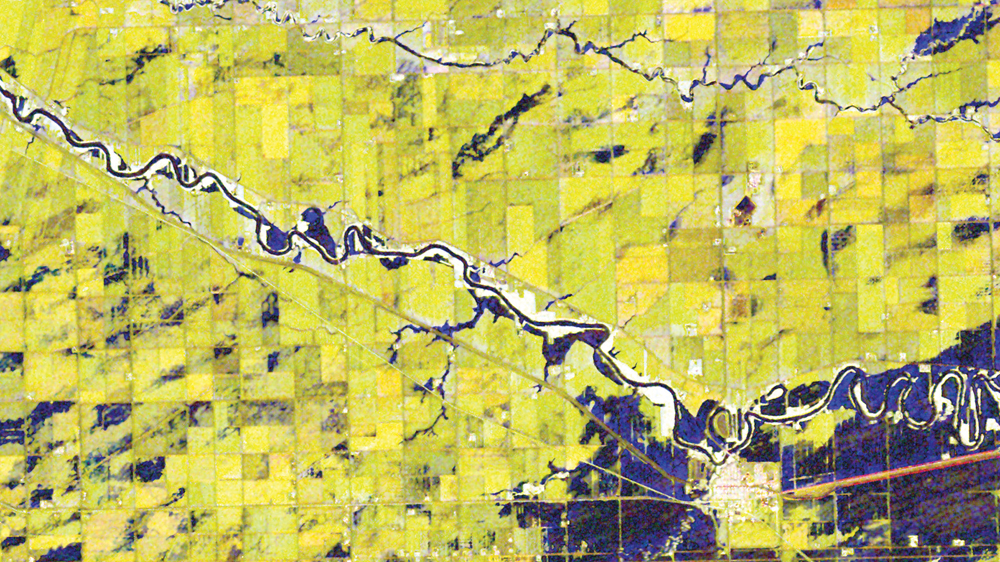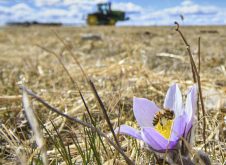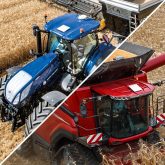Satellite imagery has potential to revolutionize agricultural management, but that isn’t likely to happen unless on-farm adoption rates increase, the head of a NASA-led consortium said during a recent event in Winnipeg.
NASA Harvest executive director Alyssa Whitcraft told attendees at this year’s Canadian Crops Convention that use of satellite imagery has exploded in some sectors — but its adoption in agriculture has lagged.
“The adoption of satellite data on-farm and other parts of the ag value chain is really not where we envisioned (it would be), given we have 50 years of history with it at this point,” she says.
A primary reason for reluctance is a tendency by some in the tech sector to oversell what the technology offers.
“This is one of my big frustrations. People say ‘Yeah, we can absolutely, completely estimate every single … thing that is happening on your farm,’” she says.
“People say ‘That’s amazing, that’s so cool. I want to use that,’ and then it doesn’t track at all with what they’re observing on their farm and it’s not providing any value add. People feel burned …
“It’s cool enough already. We don’t have to overestimate what it does.”

Another reason is lack of engagement with the farm community by companies that produce the technology, she says.
The result is a critical lack of true ground data used to power those systems. It has also resulted in solutions to problems that aren’t a concern on most farms.
“Most of the people I work with are engineers or computer scientists. They’re not necessarily thinking about the problems that really need to be addressed,” she says.
“I remember early on, someone in the remote sensing community coming to me … and they said ‘Why don’t we just use satellite images to maximize yields?’
“That’s the wrong question. It was an interesting thing for me to realize we’re often engineering solutions to problems that nobody asked for.”
Read Also

Claas brings 1000 Series SP forage harvesters to Canada
In mid-August, Claas unveiled its new line of Jaguar forage harvesters at an event in Visalia, California, deep in the heart of that state’s dairy region.
To drive on-farm adoption of satellite imagery, the scientific community must develop a better connection between technology and people. That means taking a more collaborative approach.
Whitcraft cited the example of NASA Harvest’s work with the farm community in Maui, Hawaii.
Members of the younger generation on the island didn’t see a viable future in agriculture. That began to change as they became aware of high-tech careers that could allow them to earn an income while cultivating food on their ancestral lands and helping address chronic food insecurity.
“What we do is driven by our collaborators,” she says. “We used to talk about them as users or end-users. But in order for us to make a difference, it has to be collaborative. They have to be collaborators from the beginning if they are long-term users of the tools we develop.
“It’s about building a trust infrastructure to unlock the value of Earth observations with farmers.”
Messaging must also foster greater collaboration, she adds, and focus not on seeking data for company needs, but on delivery of economical measurements to farmers.
Whitcraft repeated in an interview that enhanced collaboration will drive on-farm adoption.
“I think the wrong approach is to tell. It’s to show. The only way you can do that is collaboratively,” she says.
“We’re putting out webinars, we’re putting out surveys to get the temperature of large groups at a time. I think that will help us broadly. But I think the only way we’re going to get there is through concerted efforts that grow organically.”

Paul Bullock, a senior scholar in the University of Manitoba soil sciences department, said in an interview it’s difficult to determine the adoption rate of Earth observation technology in Canada but many farmers are reluctant to adopt it. That, he says, is due in part to lack of collaboration.
“You need some kind of a partnership. The person who knows that (on-farm information) best is the person who is farming the land. They’re the one who’s going to have the best idea.”
“You need some kind of a linkage between the research right down to the farm gate level to try and bridge that gap. I don’t know that there’s been enough of that done to make farmers feel confident that the people who can provide this (data) are actually able to provide some knowledgeable and accurate and useful information.”
Time is likely another factor hindering adoption.
Bullock recently consulted with a digital analytics company that was trying to recruit farmers for a research project. Most were hesitant because it would require attention during seeding and harvesting.
Involvement by producer groups could help, Bullock says.
“Producer groups are vetting all kinds of research proposals and they know what people are doing because they’re plugged into the research community.”
















